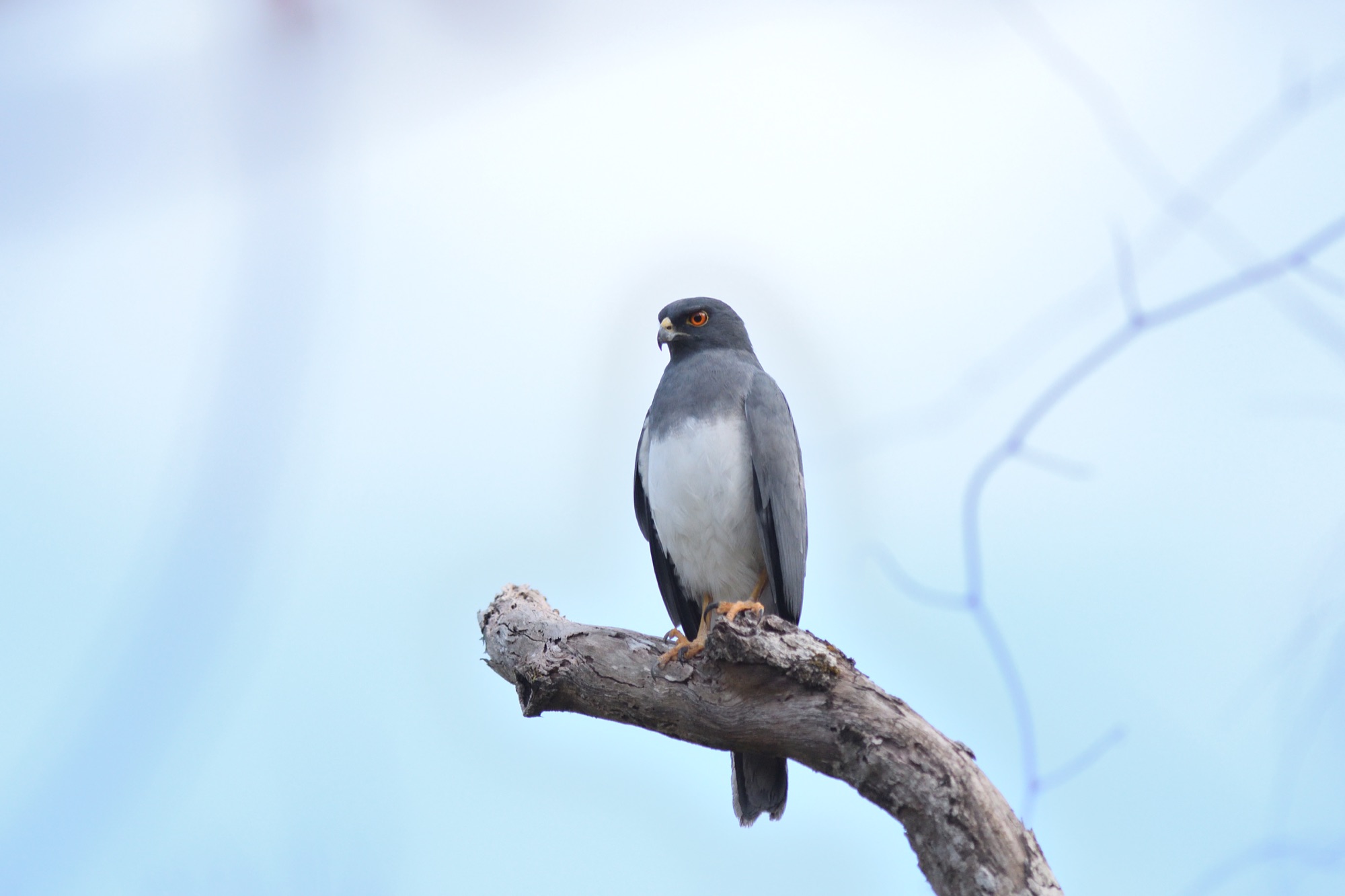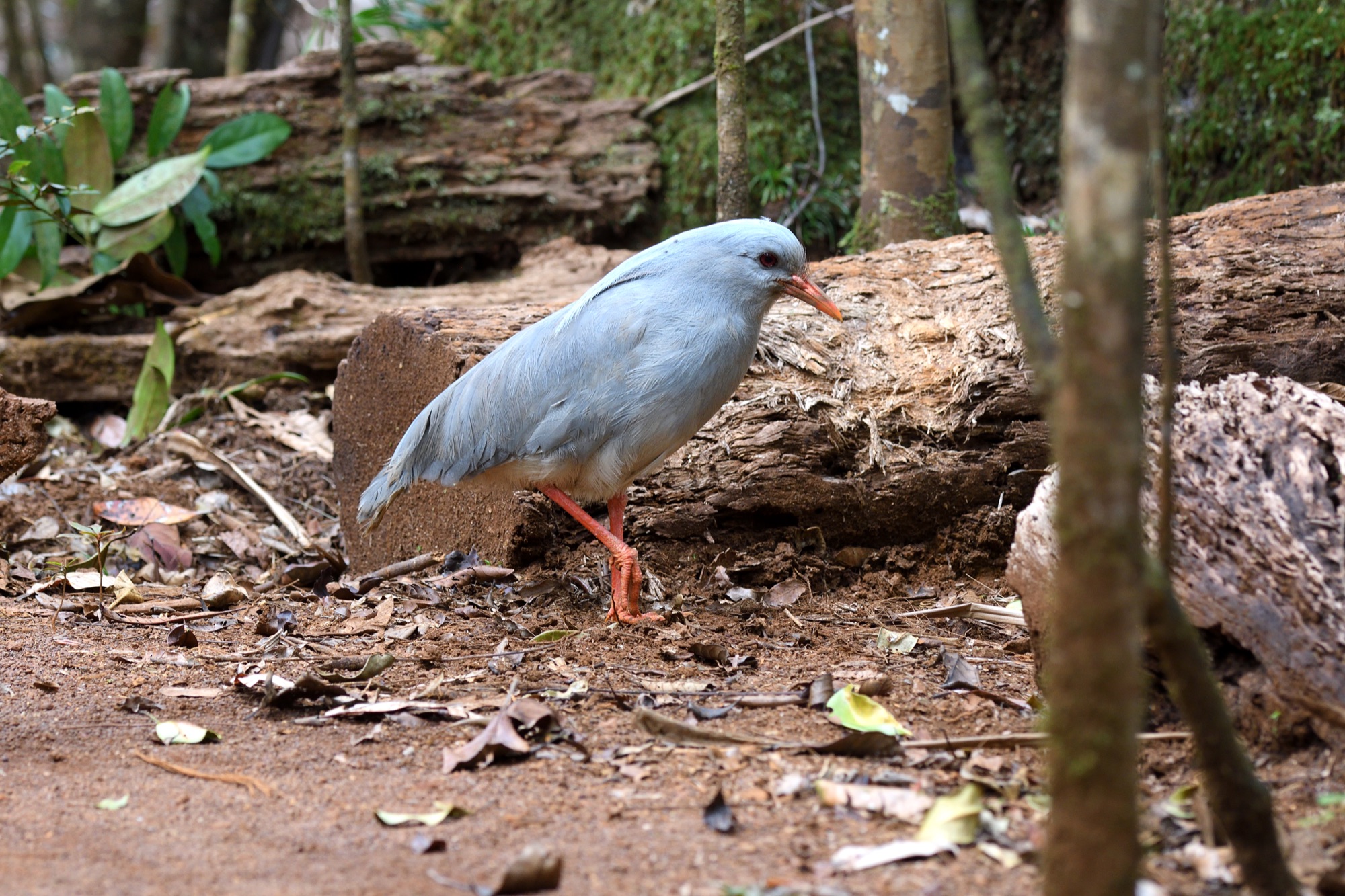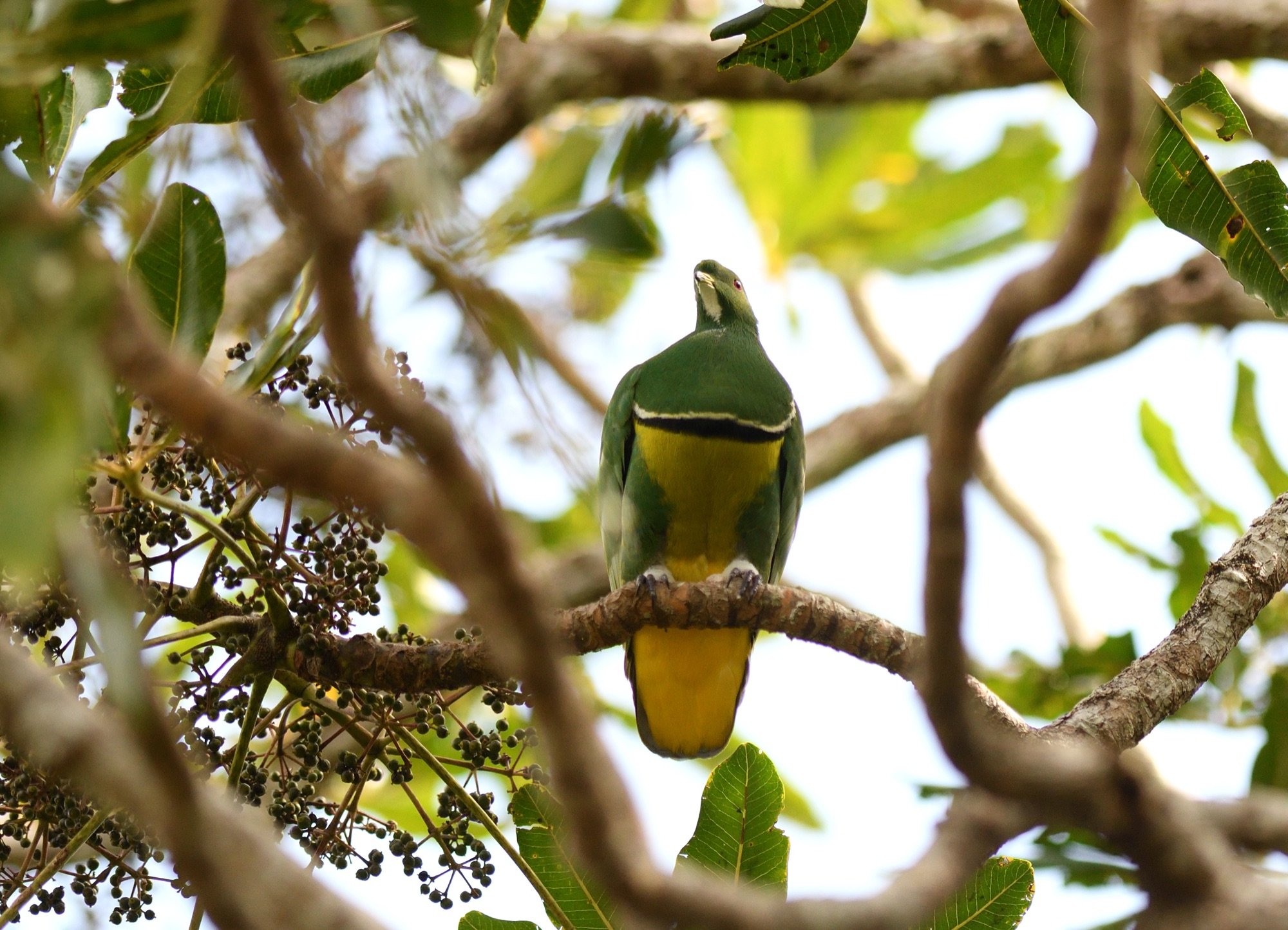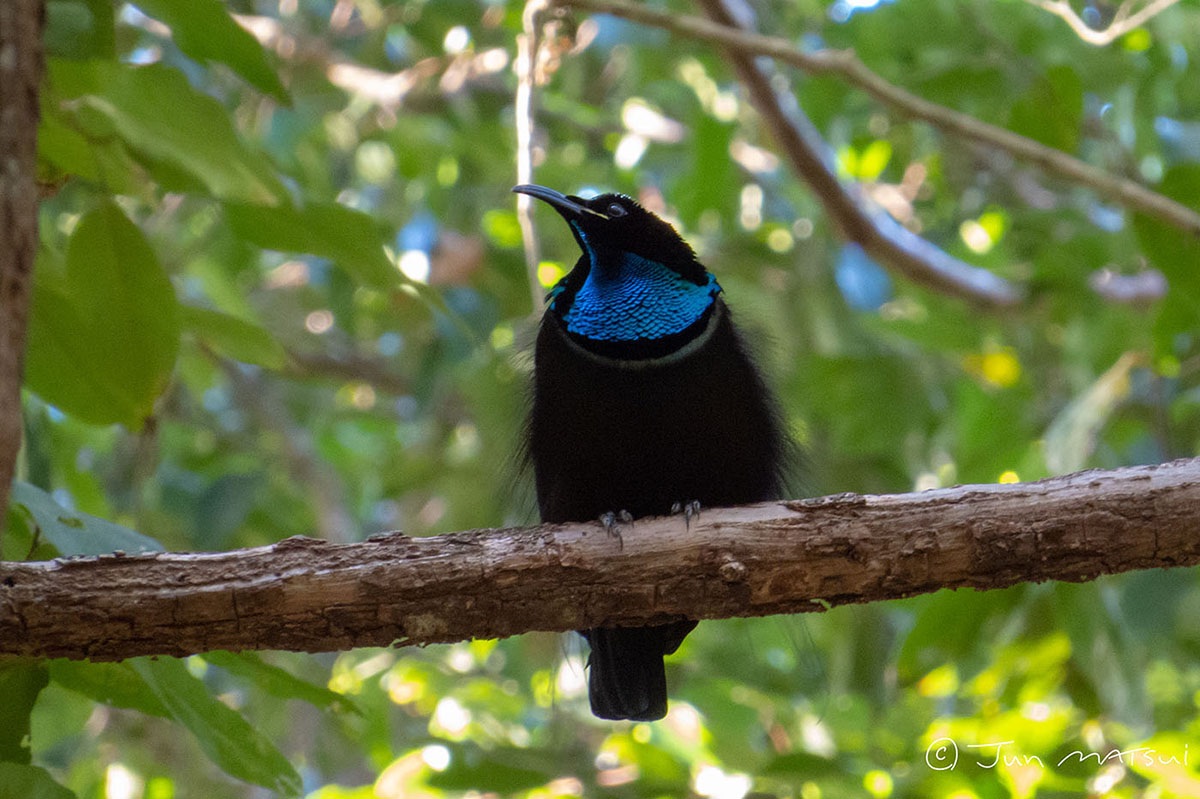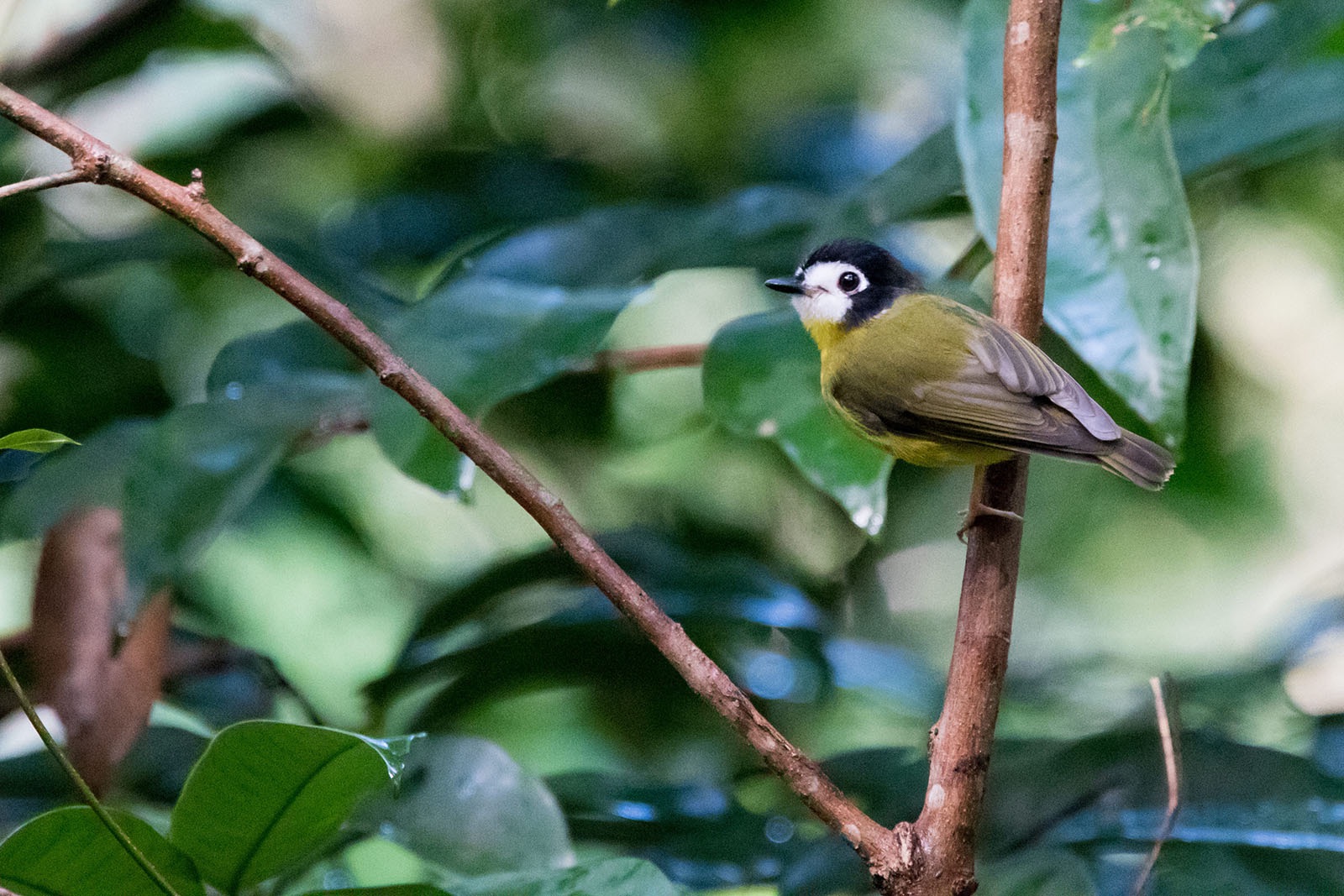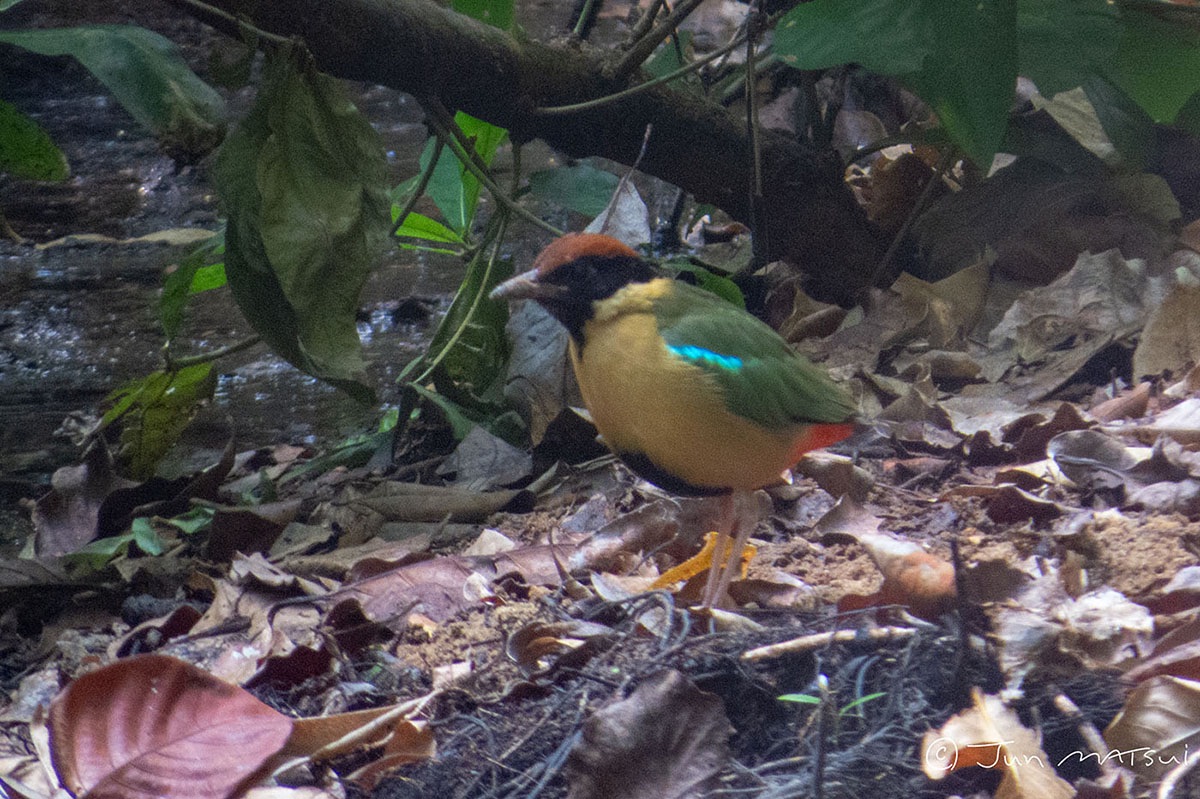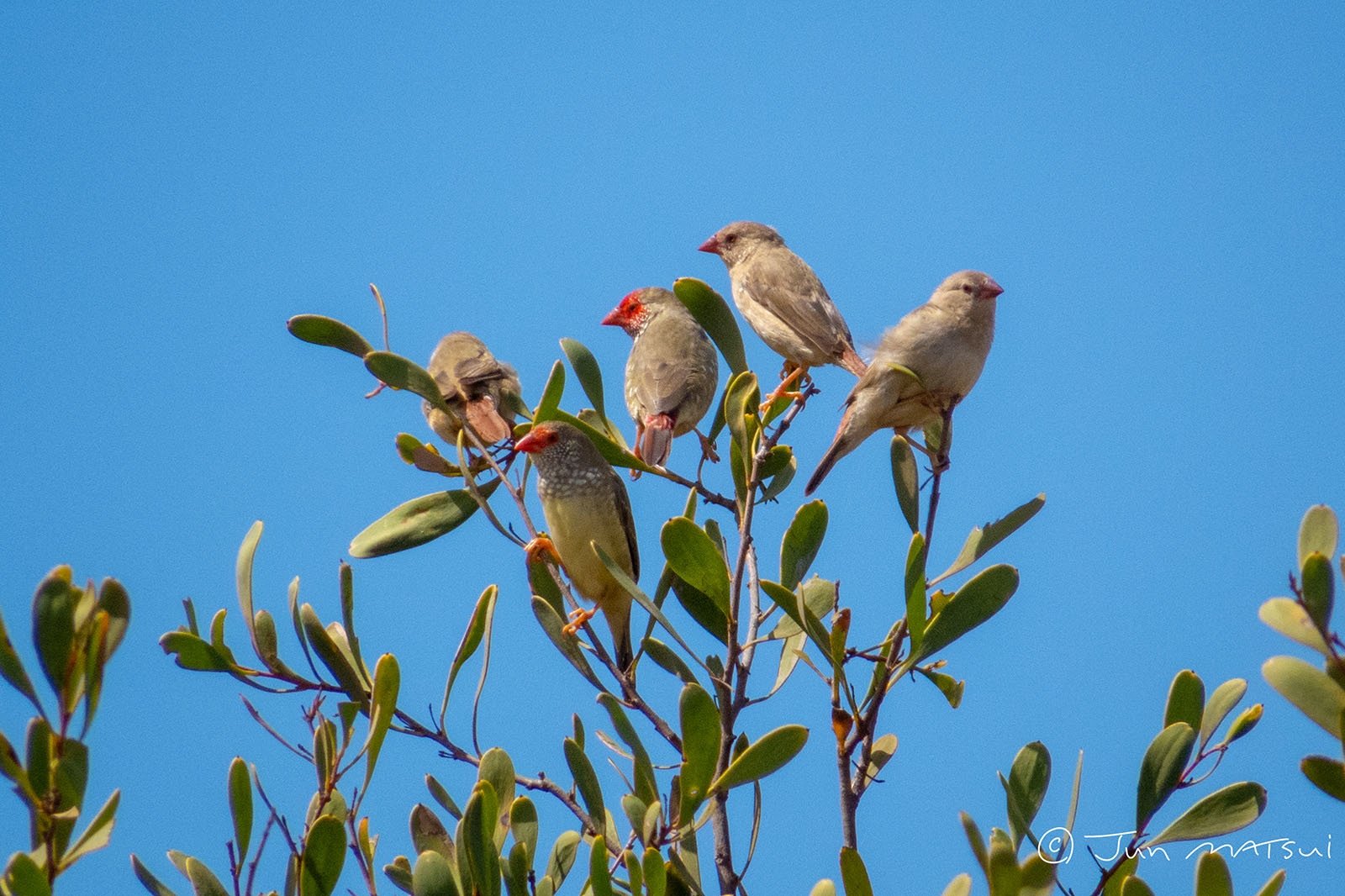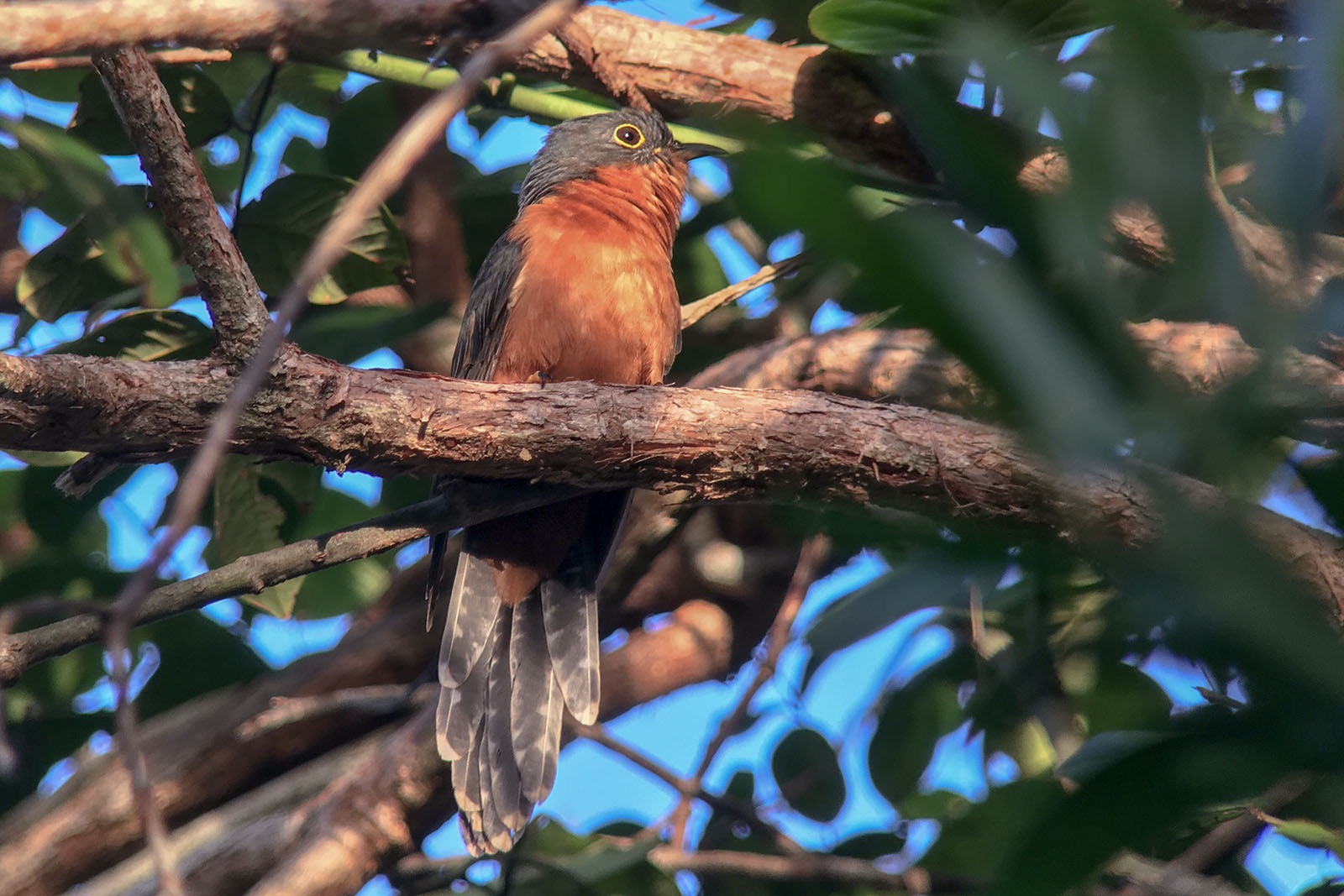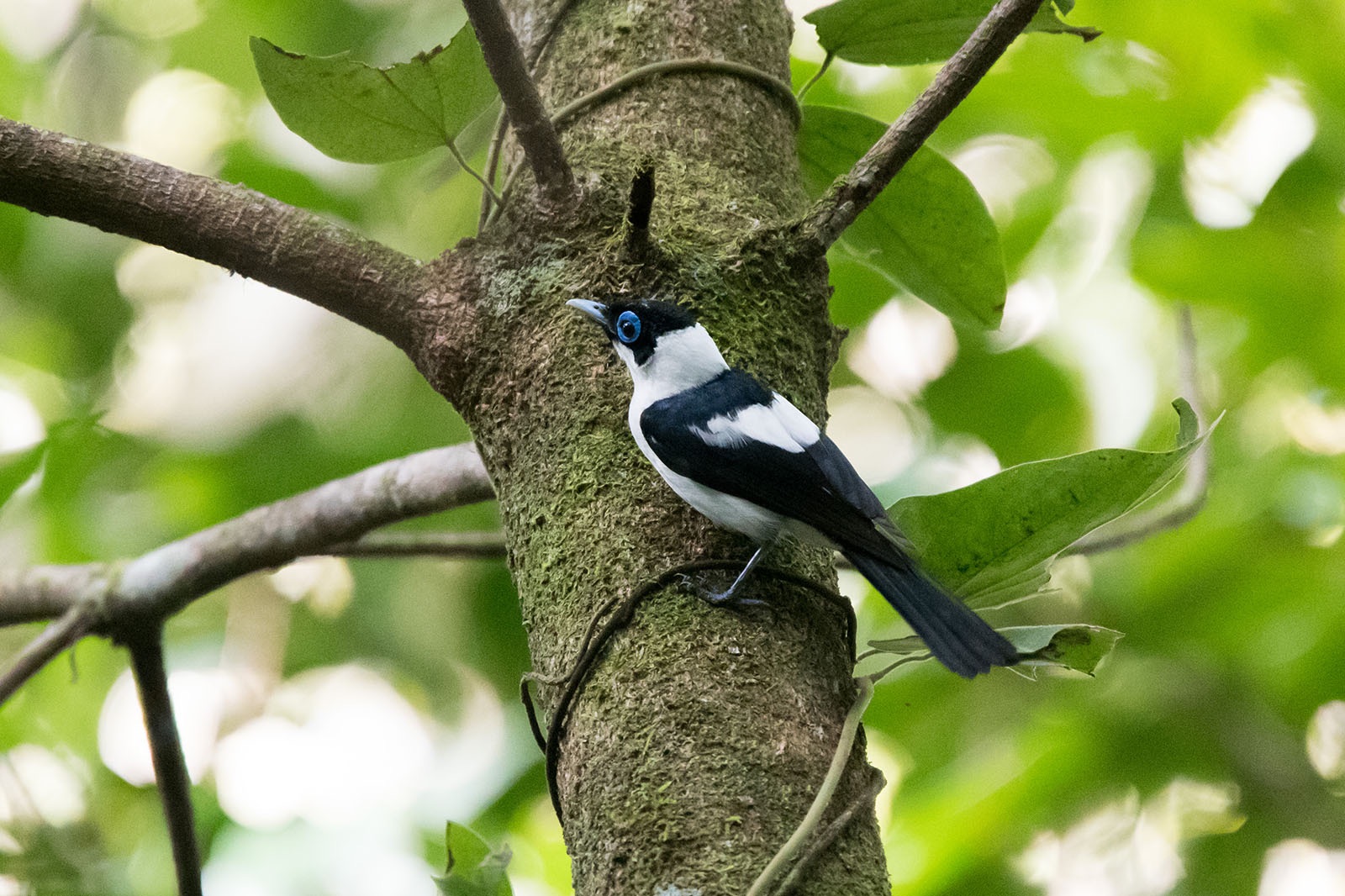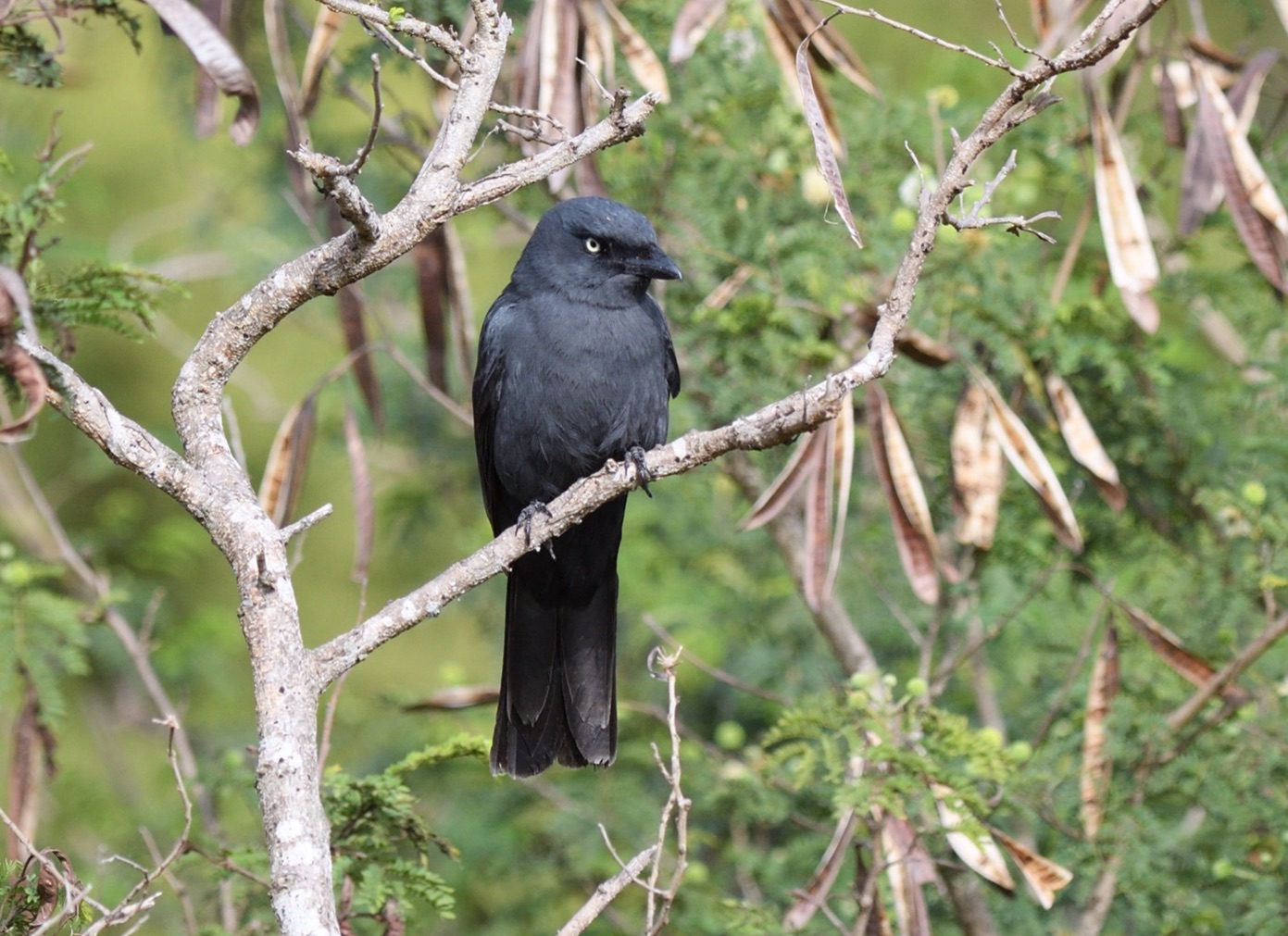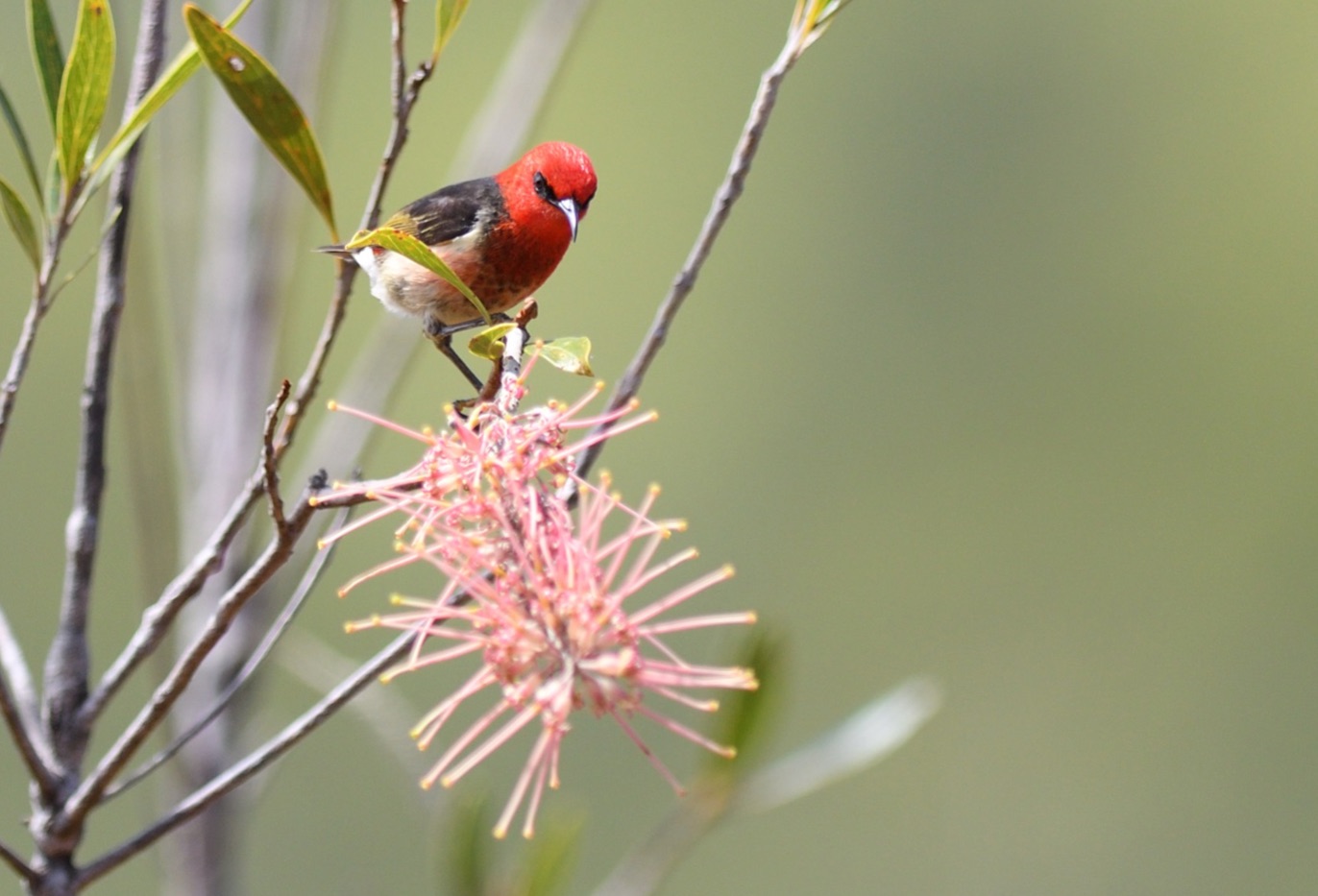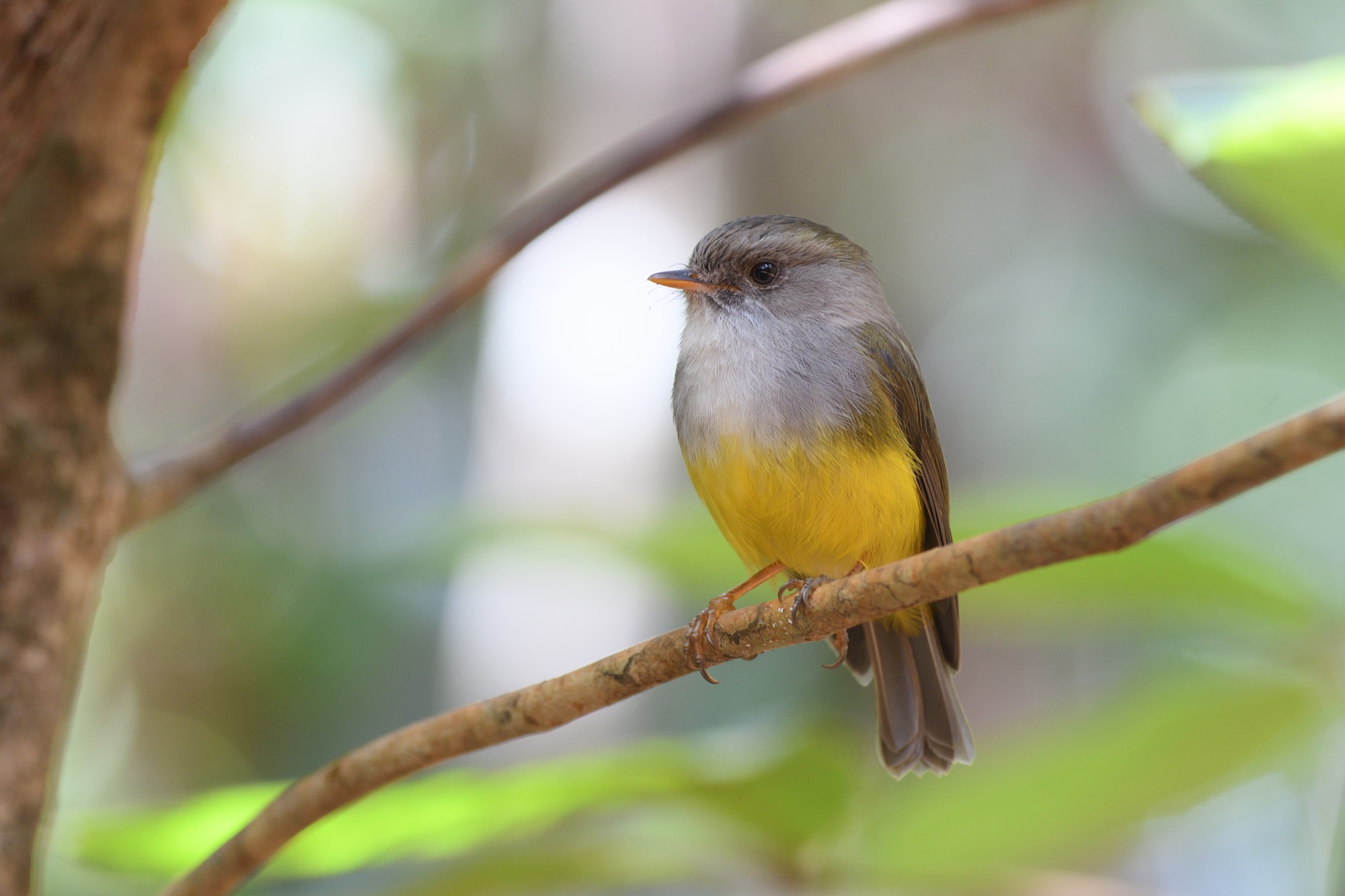AUSTRALIA: CAPE YORK & NEW CALEDONIA
Day 1 Arrival in Sydney - 21st June
Today is purely an arrival day in Sydney, where we will transfer to a nearby hotel for the night. Night in Sydney.
Day 2 Sydney - Nouméa
We will take a flight to La Tontouta International Airport, on the New Caledonian island of Grande Terre where we will be met by our local guide and drive to our hotel in Nouméa. Night in Nouméa.
Day 3 Parc de Rivière Bleue
An early start will see us drive to the picturesque Parc Provincial de la Rivière Bleue, home to the star bird of the entire tour - Kagu. Amidst the best preserved forest on the island, comprising maquis shrubland and the bird-rich tropical rainforest, we should encounter several individuals and spend plenty of time observing this unique species. It truly is an extraordinary bird, being the only member of the Rhynochetidae family and endemic to New Caledonia. It is also flightless, despite having full-sized wings and has a small population of under a 1,000 individuals. It is definitely not your average bird!
This reserve also hosts most of the island's other endemics and regional specialities, including White-bellied Goshawk, the largest arboreal pigeon in the world - New Caledonian (Goliath) Imperial-Pigeon, New Caledonian Parakeet ( a recent split from Red-fronted), Horned Parakeet, the Critically Endangered Crow Honeyeater, Barred Honeyeater, Yellow-bellied Flyrobin, New Caledonian Cuckooshrike, South Melanesian Cuckooshrike, New Caledonian Whistler, New Caledonian Friarbird, Southern Shrikebill, New Caledonian Myzomela, New Caledonian Friarbird, Striated Starling (also found on Ouvéa and Lifou), Green-backed White-eye, the tool-using New Caledonian Crow, and Red-throated Parrotfinch.
During the day we should also see a variety of more widely distributed species such as Metallic Pigeon, Coconut Lorikeet (a recent split from from Rainbow Lorikeet), Sacred Kingfisher, White-breasted Woodswallow, White-rumped and Glossy Swiftlets, Fan-tailed Gerygone, Grey-eared (Dark-brown) Honeyeater. Melanesian Flycatcher, both Streaked and Grey Fantails and Long-tailed Triller. Night in Nouméa.
Days 4 Ouvea ( Loyalty Islands)
We will take a short flight to the remote Ouvea Island as this is the only place in the world to see the stunning Ouvea Parakeet. This will probably be one of the more leiurely days of the tour as once we have located our primary goal we can do some seawatching sat on a pristine white sandy beach and scan for Great and Lesser Frigatebirds, whilst other possibilities include Red-footed and Brown Boobies, Black and Brown Noddies, Wedge-tailed Shearwater, and perhaps something rarer could be seen such as a Tahiti Petrel. Other specis present include Pacific Emerald Dove, Melanesian Flycatcher and Melanesian Whistler. We will fly back to Grande Terre this afternoon and transfer to our hotel. Night in Nouméa.
Day 5 Lifou (Loyalty Islands)
Another short flight will take us to the picturesque island of Lifou, which is the largest of the Loyalty Islands at 81kms long and 24 kms wide. Our reason for coming here is this is the only place in the world to find Small Lifou White-eye and the odd-looking Large Lifou White-eye. The forests here also hold the beautiful Brown Goshawk, Red-bellied Fruit-Dove, Metallic Pigeon, Shining-bronze Cuckoo, Cardinal Myzomela, Silver-eye (endemic melanops race), Long-tailed Triller,amongst others. We will fly back to Grande Terre again this evening. Night Farino area.
Day 6 Parc des Grande Fougeres
This excellent reserve gives us further chances of many of the same endemics as Parc de Rivière Bleue but is the best site for White-bellied Goshawk, the beautiful Cloven-feathered Dove, New Caledonian Crow and the hardest endemic of them all, New caledonian Thicketbird.
We may have time for some more general birding which could result in sightings of Little Pied Cormorant, Pacific Reef Heron, White-faced Heron, Rufous Night-Heron, Grey Teal, Pacific Black Duck, Whistling Kite, Swamp Harrier, Buff-banded Rail, Australasian Swamphen and Sacred Kingfisher amongst others.
Day 7 Pelagic
As long as conditions are good we will venture out into the Pacific Ocean some 15-20 miles and undertake one of the very few pelagics to have ever been undertaken from New Caledonia. Our primary focus will be on locating New Caledonian Storm-Petrel, but we could also find Tahiti Petrel, Black-winged Petrel or Gould's Petrel. Who knows what we will find? Night in Nouméa.
Day 8 New Caledonia - Sydney - Cairns - 28th June
We will take a morning flight to Sydney and onward connection to Cairns where we will transfer to a nearby hotel for the night.
Day 9 Cairns Area
Today we will explore the Cairns area....
Day 10 Cairns - Musgrave
From Cairns we drive north through Mt Molloy to Mt Carbine, the McLeod River and on to Lakeland. We will stop to look at interesting birding sites and to refresh ourselves along the way. After lunch we continue on to Musgrave. The late afternoon is spent searching for the Golden- shouldered Parrot. Night in Musgrave.
Travel from Cairns to Musgrave birding along the way for dry country birds such as Great Bowerbird. The late afternoon will be spent searching for Golden-Shouldered Parrot.
Our main purpose in coming to this remote region is to look for the rare and highly localized endemic Golden-shouldered Parrot, a much sought-after species that few Australian birders have ever seen, let alone overseas visitors, owing to the remote location of its small surviving population in the Cape York Peninsula. As well as dry eucalypt woodland punctuated by numerous termite hills (in which the parrots nest), there are also extensive grassy plains, lagoons and gallery woodland along the rivers of this region, especially in the huge Lakefield National Park.
We have an excellent chance of finding the beautiful little Golden-shouldered Parrot at a drinking pool either early or late in the day, and we should also come across Black-backed Butcherbird, another Cape York speciality. We even have a very good chance of coming across a Red Goshawk, one of Australia’s rarest raptors, in this splendid area.
Other likely species in the Musgrave region include Australasian Grebe, Australasian Darter, Little Pied and Little Black Cormorants, White-necked, White-faced and Pied Herons, Eastern Great, Intermediate and Eastern Cattle Egrets, Nankeen (or Rufous) Night Heron, Glossy, Australian White and Straw-necked Ibises, Royal Spoonbill, Black-necked Stork, Magpie Goose, Plumed and Wandering Whistling Ducks, Radjah Shelduck, Green Pygmy-goose, Grey Teal, Pacific Black Duck, Hardhead, Whistling, Black and Brahminy Kites, the impressive Black-breasted Buzzard, White-bellied Sea-Eagle, Wedge-tailed Eagle, Nankeen (or Australian) Kestrel, Black Falcon, Brolga, the impressive Australian Bustard, Australian Pratincole, White-headed Stilt, Black-fronted Dotterel, Masked Lapwing, Comb-crested Jacana, Latham’s and perhaps Swinhoe’s Snipes, Common Greenshank, Marsh, Wood and Sharp-tailed Sandpipers, Gull-billed and Whiskered Terns, Common Bronzewing, Peaceful and Bar-shouldered Doves, Red-tailed Black Cockatoo, Galah, Sulphur-crested Cockatoo, Rainbow Lorikeet, Red-winged Parrot, Pale-headed Rosella, Pheasant Coucal, Eastern (or Australian) Koel, Channel-billed Cuckoo, Southern Boobook, Large-tailed Nightjar, Papuan Frogmouth, Laughing and Blue-winged Kookaburras, Forest Kingfisher, Rainbow Bee-eater and Oriental Dollarbird.
Passerines include Great Bowerbird, Red-backed Fairy-wren, Striated Pardalote, Weebill, White-throated Gerygone, White-gaped, Yellow, Yellow-tinted, Bar-breasted, Rufous-banded, Rufous-throated, Dusky, Red-headed, Banded, Brown, White-throated and Blue-faced Honeyeaters, Silver-crowned and Little Friarbirds, Grey-crowned Babbler, Black-faced and White-bellied Cuckoo-shrikes, Rufous Whistler, Grey Shrike-thrush, Australian Figbird, Olive-backed Oriole, Pied Butcherbird, Australian Magpie, Spangled Drongo, Willie Wagtail, Torresian Crow, Broad-billed and Leaden Flycatchers, Magpie-lark, Lemon-bellied Flycatcher, Jacky Winter, Horsfield’s Bushlark (split from Singing), Golden-headed (or Bright-headed) Cisticola, Olive-backed (or Yellow-bellied) Sunbird, Double-barred and Masked Finches, and Australian Pipit.
Day 11 Lakefield National Park
We will have a full day of birding in Lakefield National Park. There are a number of lagoons with waterbirds, and the grasslands hold many finches including the Star Finch. In the evening we will do some spotlighting and return to Musgrave where we stay the night. Night in Musgrave.
Full day birding in Lakefield National Park. There are a number of lagoons with waterbirds, and the grasslands hold many finches including the Star Finch. If we are lucky the Red Goshawk may show itself.
Day 12 Musgrave - Portland Roads - Lockhart River
In the early morning we bird the area around Musgrave, and then continue north to Archer River. After some birding and lunch, we travel to Portland Roads via Iron Range National Park. There is a chance of Palm Cockatoo and other specials as we travel over the rough tracks towards the coast. Late afternoon we reach our destination and will stay four nights at Iron Range Cabins.
Early morning birding around Musgrave before traveling to Portland Roads via Iron Range National Park. Chances for Palm Cockatoo and other local specials on the way.
Days 13 - 14 Iron Range
Birding the tropical rainforest and woodlands around Iron Range. Visit the nesting tree of the Eclectus Parrots, and should see many other of the New Guinea specials such as Trumpet Manucode and Yellow-billed Kingfisher. Again we have an early start and will spend the day birding Iron Range National Park. We visit a number of different sites in search of Green- backed Honeyeater, Northern Scrub-robin and other skulkers. Late afternoon we return to our accommodation for a cold drink and a meal
Iron Range is a wonderful part of Australia and deservedly a birding ‘mecca’, although relatively few Australian birders get up here, never mind overseas birders. Iron Range National Park protects the largest remaining area of lowland tropical rainforest on the continent. The habitat in much of Iron range is a patchwork of tropical rainforest, drier eucalypt and paperbark woodland and areas of tropical heathland.
There is a fantastic selection of speciality birds at Iron Range, including a long series of species that normally only occur in Australia in the Cape York Peninsula: Spotted Whistling Duck, Palm Cockatoo, Eclectus Parrot, Red-cheeked Parrots, Chestnut-breasted Cuckoo, Yellow-billed Kingfisher, Fawn-breasted Bowerbird, Tropical Scrubwren, White-streaked Honeyeater, Tawny-breasted Honeyeater, Green-backed Honeyeater, Frill-necked Monarch, Black-winged Monarch (this migrant species will just be arriving at the time of our visit), Trumpet Manucode, Magnificent Riflebird, Yellow-legged Flycatcher, White-faced Robin and Northern Scrub-robin.
Of these the most significant to visiting birders are those endemic to Cape York (rather than shared with New Guinea); Northern Scrub-robin (now a Cape York endemic following the splitting of Papuan Scrub-robin), Frill-necked Monarch and White-streaked Honeyeater. Another key species is Tropical Scrubwren, a species that is not normally seen on bird tours in New Guinea.
Other major specialities include Rufous Owl and Marbled Frogmouth (the form of the latter here, marmoratus, may represent a different species from the form plumiferus, Plumed Frogmouth, of the central east coast).
Some of the specialities here are highly memorable birds in their own right. Who could forget the huge Palm Cockatoos raising their punk-style crests and screeching loudly as they perch in the rainforest trees? Or fail to be impressed by a Magnificent Riflebird’s shiny plumage, or a Marbled Frogmouth peering down from its perch? And what about a puffed-up Frill-necked Monarch or some vividly-painted Eclectus Parrots?
Other new birds we may encounter at Iron Range include Australian Brush-turkey, Orange-footed Scrubfowl, Striated Heron, Little and Eastern Reef (or Pacific Reef Egrets, Black Bittern (infrequently seen), Brown Cuckoo-Dove, Pacific Emerald Dove, Superb, Rose-crowned and Wompoo Fruit Doves, Pied Imperial Pigeon, Australian Swiftlet, Lesser and Great Frigatebird, Pacific Baza, Brown and Grey Goshawks, Collared Sparrowhawk, Pied Oystercatcher, Pacific Golden Plover, Mongolian and Greater Sand Plovers, Eurasian Whimbrel, Common Sandpiper, Grey-tailed Tattler, Red-necked Stint, Ruddy Turnstone, Silver Gull, Greater Crested, Lesser Crested, Bridled, Little and Black-naped Terns, Brown (or Common) Noddy, Double-eyed Fig Parrot, Little Bronze Cuckoo, Oriental and Brush Cuckoos, Masked Owl (uncommon), Azure and Collared Kingfishers, Noisy Pitta, Spotted Catbird, Lovely Fairy-wren, Large-billed and Fairy Gerygones, Yellow-spotted, Graceful, Varied and Brown-backed Honeyeaters, Helmeted Friarbird, Cicadabird, Varied Triller, Grey Whistler, Little Shrike-thrush, Yellow Oriole, White-breasted Woodswallow, Black Butcherbird, Pied Currawong, Rufous Fantail, Shining Flycatcher, White-eared and Spectacled Monarchs, Yellow-breasted Boatbill, White-browed and Mangrove Robins, Silvereye, Metallic Starling, Mistletoebird and Red-browed Finch. Mammals are not conspicuous, but we can expect Agile Wallaby and there is a good chance for Southern Spotted Cuscus.
Day 15 Portland Roads – Chilli Beach
The first part of the day is spent birding around Portland Roads, where we can see the Fawn-breasted Bowerbird and Mangrove Robin. In the afternoon a visit to Chilli Beach should produce a good selection of new species, and we can observe the spectacular swirling flight of thousands of Metallic Starlings coming in to roost on dusk. After this we will do some night spotting. On our spotlighting trip we hope to see Marbled Frogmouth and Rufous Owl. Night at Lockhart River.
Day 16 Lockhart River - Cairns
After breakfast we bird the local area before making our way to the Lockhart River airport for the flight back to Cairns. Night in Cairns.
Day 17 Great Barrier Reef
After breakfast we will head to the Great Barrier Reef. Night in Cairns.
Day 18 Cairns Area
.
Days 19 Cairns - End of Tour - 9th July
Transfer to the airport for flights home and end of a wonderful tour.
All photos copyright Nick Bray/Zoothera Birding unless otherwise stated.
Just hover your cursor over each image for info.

